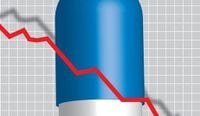Americans have long found themselves at the crossroads of hope and frustration when it comes to the price of prescription drugs. In recent months, that tension has only grown, as President Trump’s administration has rolled out an array of new policies aimed at reshaping the U.S. pharmaceutical landscape—policies that have ignited debate across the political spectrum and left consumers, drugmakers, and lawmakers grappling with a rapidly changing marketplace.
On August 13, 2025, President Trump issued an executive order directing the Department of Health and Human Services (HHS) to develop a list of approximately 26 drugs deemed critical to national health and security. The order didn’t stop there; it also called for the creation of a repository to receive and maintain the Active Pharmaceutical Ingredients (APIs) used to manufacture these essential drugs. The rationale, according to the executive order, is stark: only 10 percent of APIs for the U.S. drug market are made domestically, leaving the country heavily reliant on foreign suppliers—sometimes from nations viewed as adversarial. "Overreliance on foreign, sometimes adversarial, nations for Key Starting Materials... risks shortages of essential medicines," the order cautioned, as reported by Forbes.
To address these vulnerabilities, the administration has leaned into tariffs as a tool for both economic leverage and domestic production. India, which supplies nearly 40 percent of America’s generic drugs, found itself in the crosshairs this summer. President Trump proposed tariffs on Indian drug exports of up to 250 percent, according to India Today. Meanwhile, tariffs on pharmaceutical products from Switzerland—home to industry giants like Roche and Novartis—were under review as of early fall, with potential implications for global supply chains.
But tariffs, while intended to encourage domestic manufacturing, come with significant risks for American consumers. Wayne Winegarden, director at the Pacific Research Institute, minced no words: "Tariffs are taxes on the products U.S. households consume. And the historical record clearly shows that, if imposed, these taxes will increase costs on Americans. Applied to pharmaceutical products and ingredients, tariffs will raise the cost of drugs." This sentiment was echoed by Michael Gaino, senior director at the American Society of Health-System Pharmacists, who warned that generic drug makers—already operating on razor-thin margins—could be squeezed out, reducing access to affordable medicines.
Senator Bernie Sanders, a longtime critic of high drug prices, has taken the administration to task for what he sees as insufficient action. On September 29, 2025, Sanders released a report documenting price increases for 688 medications—310 brand-name and 378 generic—since Trump returned to office. The median increase was 5.5%, but some drugs saw far more dramatic hikes. Eton Pharmaceuticals, for example, raised the price of Galzin, used to treat Wilson’s disease, from $5,400 to an eye-watering $88,800 per year—while the same drug costs just $1,400 in the UK and $2,800 in Germany. Novartis’ cancer drug Kymriah now costs $594,000 annually in the U.S., compared to $381,000 in the UK and $282,000 in Germany.
"These price increases are just the beginning. Trump's chaotic across-the-board tariffs will further increase prices," Sanders’ report warned. The senator also pointed out that, since President Trump sent letters to 17 pharmaceutical manufacturers on July 31, 2025, asking them to lower prices, the prices of 87 drugs have actually increased. Sanders called for more than "press releases, polite requests to drug companies, and pilot projects," instead advocating for legislation to cap U.S. drug prices at the median paid in Canada, the UK, France, Germany, and Japan. "If President Trump is serious about making real change, he will support my legislation to make sure Americans pay no more than people in other major countries for the exact same prescription drug," Sanders declared, as reported by Common Dreams.
Meanwhile, the Trump administration has pursued a multipronged approach beyond tariffs. Direct-to-consumer (DTC) sales programs—already adopted by companies like Eli Lilly, Pfizer, Bristol Myers Squibb, and Novo Nordisk—have been encouraged by the president, with the aim of cutting out middlemen and lowering prices for patients. "If DTC sales become the norm in the pharmaceutical industry, patients and employers could save tens of billions of dollars—by cutting out middlemen who currently profit from the convoluted and opaque drug supply chain at everyone’s else’s expense," wrote Sally Pipes, president of the Pacific Research Institute, in Forbes.
But the challenge of high drug prices is not just about tariffs, supply chains, or new sales models. As Tom Price, former HHS secretary, highlighted in an opinion piece, patent manipulation remains a major barrier to competition. Over the past two decades, the number of patents per drug has tripled, often covering minor changes that extend monopolies beyond what Congress intended. This "patent thicket" stifles competition and keeps prices high, even as generic and biosimilar drugs—credited with saving the U.S. healthcare system $467 billion in 2024 alone—struggle to reach the market.
Efforts to speed up the approval of generics and biosimilars, crack down on anticompetitive practices, and give patients more choices have been central to the Trump administration’s agenda. Health and Human Services Secretary Robert F. Kennedy Jr. is scheduled to release a blueprint by October 12, 2025, aimed at further reducing drug costs and addressing these barriers. The administration’s focus, according to Price, is to "put patients first, restore integrity to the system, and finally deliver the relief families have been waiting for."
Yet, critics argue that the administration’s broader healthcare policies may undermine these efforts. The Sanders report claims that major cuts to federal healthcare programs, signed into law during Trump’s term, will make it harder for millions to afford prescription drugs, as people lose coverage and face rising premiums and out-of-pocket costs. The report also highlights loopholes in new legislation that prevent Medicare from negotiating prices on some of the most expensive drugs, benefiting large pharmaceutical companies.
As the October 1 deadline for a new 100% tariff on pharmaceutical products looms—unless manufacturers make or plan to make their products in the U.S.—insurers are already warning that higher drug prices from tariffs will translate into higher health insurance premiums for consumers. The stakes, it seems, have never been higher for American families, drugmakers, and policymakers alike.
In the end, the battle over drug prices in America is far from settled. With new executive orders, legislative proposals, and industry changes on the horizon, the coming months will test whether the administration’s ambitious plans can truly deliver relief—or simply add a new layer of complexity to an already tangled web.




